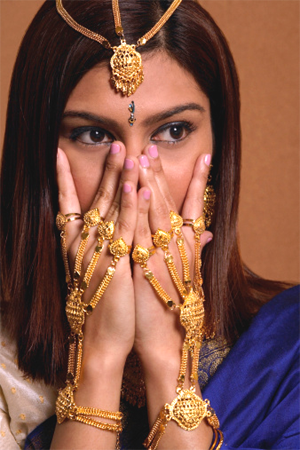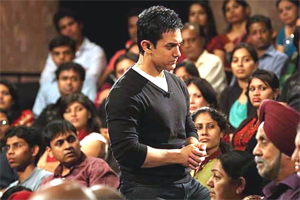Indeed, every group feels that their religious liberty is under attack. Is there a time in history when a group did not feel threatened by co-religionists, other religions and the governments? Here is a short history and possible solutions.
This a weekly column at
Dallas Morning News, here is Mike’s contribution on the
topic.
MIKE GHOUSE, President, Foundation for Pluralism, Dallas
Indeed, every group feels that their
religious liberty is under attack. Is there a time in history when a group did
not feel threatened by co-religionists, other religions and the governments?
Here is a short history and possible solutions.
Jews have always been under attack. They felt at home in Spain, which was destroyed by butcher Ferdinand. Then, they felt at home in Germany, but the Holocaust tore them apart and their belief in humanity was shattered. Every day, they have to be on guard. Someone or another is making anti-Semitic comments.
Fred Phelps was in Dallas in July 2010 demonstrating hate against Jews. The anti-circumcision bills in San Francisco and Santa Monica in 2011 were irritants. Last month in Houston, the Jewish academy could not participate in a basketball game. It was set on Saturday, most Jews refrain from activity that day. Indeed, it is restricting their freedom to practice their religion by exclusion and being insensitive to their faith.
Jews have always been under attack. They felt at home in Spain, which was destroyed by butcher Ferdinand. Then, they felt at home in Germany, but the Holocaust tore them apart and their belief in humanity was shattered. Every day, they have to be on guard. Someone or another is making anti-Semitic comments.
Fred Phelps was in Dallas in July 2010 demonstrating hate against Jews. The anti-circumcision bills in San Francisco and Santa Monica in 2011 were irritants. Last month in Houston, the Jewish academy could not participate in a basketball game. It was set on Saturday, most Jews refrain from activity that day. Indeed, it is restricting their freedom to practice their religion by exclusion and being insensitive to their faith.
Hindus are an open game to evangelists.
A few years ago, a Baptist convention made a declaration to harvest the "Poor
Hindu souls". This year, Russians made a serious attempt to ban Bhagvad Gita,
the Hindu Holy Book. In November 2011, a Kentucky state senator attacked
Hinduism as an idolatrous belief. California textbooks portrayed Hinduism in
negative light, so the battle is still on. There is a debate among Indians: Had
Bobby Jindal of Hindu parents and Nikki Haley of Sikh parents practiced their
faiths, and not converted to Christianity, would they have become
governors?
Sikhs had to fight with Arizona to keep
the name of a Sikh 9/11 victim on a memorial wall. Wicca had to fight for the
headstone in Arlington Memorial Cemetery for those who died serving America. Of
course, there are enough stories about Native Americans, atheists and
others.
Muslim Americans strongly feel the noose
tightening on their freedom. Most restrictions are coming out of sheer ignorance
and a false understanding of what their faith is about, as they practice in
America rather than Saudi Arabia or Iran. The senators and representatives who
have initiated anti-Sharia bills can't even tell what they are
opposing.
The irony is neither the organizations
nor the Muslims are seeking Sharia to be a part of the American law. All they
are asking is to have options to square personal matters between family members
through a jury, mediation, court hearing or the Sharia guidelines. Indeed, it is
no different than the option of Jews using Halaqa in their personal conflicts or
going to a psychologist for counseling.
Most Christian denominations have been
under attack by fellow Christians. Missionaries were unforgivably cruel to
natives around the world, including America. Most of the groups that infringe on
the freedom of others have also been a victim.
The Catholic diocese has rightly filed
the law suit protesting the Government's intrusion in the practice of their
faith that the employers provide workers free contraceptives. This is the right
thing to do - to stand up for the freedom of religion. As a Muslim I have stood
up for freedom of every religious group, in this case with the Catholic Church.
Indeed, it was good to see evangelical leader Richard Land make the same pledge
along with me on Sean Hannity Radio.
In summary, the issues are about whether
a majority - or the government - can arrogantly push vulnerable ones into
obeying.
We need to build an America where no one
is apprehensive or afraid of the other. Each one of us needs to feel home, a
home where everyone can drop his or her guards and lives
freely.
It is our duty to safeguard the
liberties endowed by our creator to practice our beliefs. It behooves for us to
stand up for each other, why should anyone stand up for you, if you are not
willing to do the same for them?
To
see all the contributors, please visit Dallas Morning news at:http://religionblog.dallasnews.com/archives/2012/05/texas-faith-is-religious-freed.html
. .
. . .
MikeGhouse is committed to building a Cohesive America and offers
pluralistic solutions on issues of the day. He is a professional speaker,
thinker and a writer on pluralism, politics, civic affairs, Islam, India, Israel, peace and
justice. Mike is a frequent guest on Sean Hannity show on
Fox TV, and a commentator on national radio networks, he contributes weekly to
the Texas Faith Column at Dallas Morning
News and regularly at Huffington post, and
several other periodicals across the world. The blog www.TheGhousediary.com is
updated daily.



 The show, thankfully, did not go linear. It had
interesting twists and turns. After another tragic tale from Kerala and an
unsolved case from Punjab, we had a case of ‘pakarva byah’. I liked it a
lot. The boy’s father demanded dowry. The girl’s father got the boy kidnapped.
The marriage took place with all ‘haldi’ and other rituals. The first
night came. The boy was angry. He ordered the girl to stand in a corner and not
come near him. After all the adventures of the day, the boy was naturally tired;
he slept. When he woke up in the morning, the girl was still standing at the
spot where he had ordered her to stand. He kissed his fair, beautiful wife and
as they say , ‘The rest is history’.
The show, thankfully, did not go linear. It had
interesting twists and turns. After another tragic tale from Kerala and an
unsolved case from Punjab, we had a case of ‘pakarva byah’. I liked it a
lot. The boy’s father demanded dowry. The girl’s father got the boy kidnapped.
The marriage took place with all ‘haldi’ and other rituals. The first
night came. The boy was angry. He ordered the girl to stand in a corner and not
come near him. After all the adventures of the day, the boy was naturally tired;
he slept. When he woke up in the morning, the girl was still standing at the
spot where he had ordered her to stand. He kissed his fair, beautiful wife and
as they say , ‘The rest is history’. 


